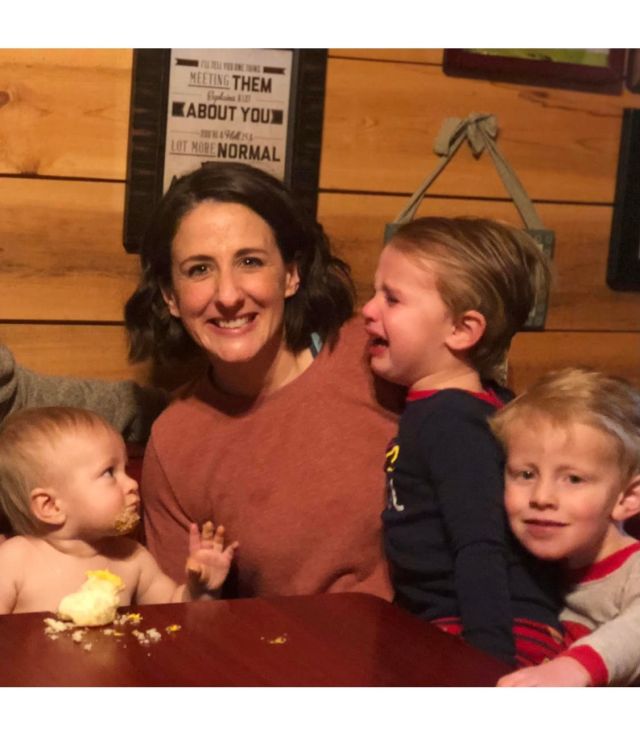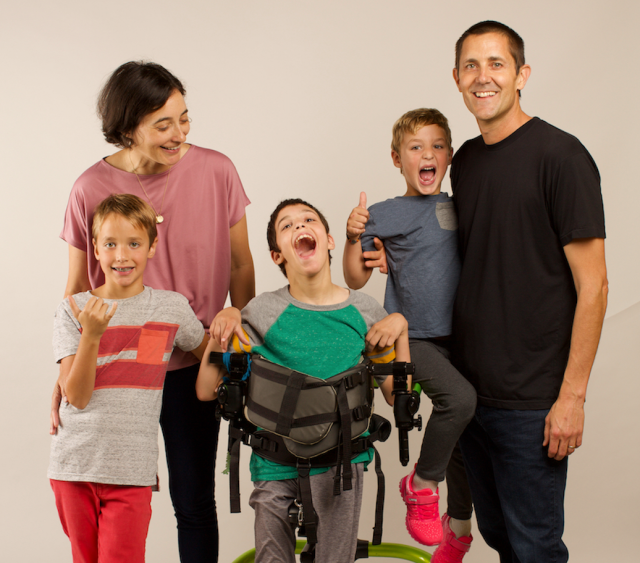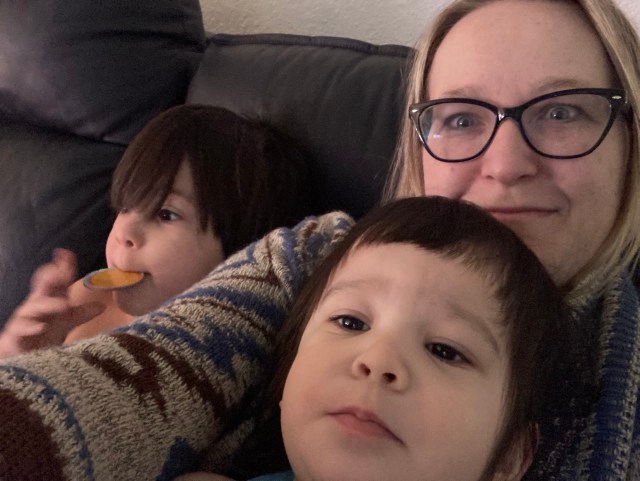Boy mom. It’s all I heard during my first, second, and third pregnancies. I never understood it. I don’t know what it is about me that says “boy mom” and honestly, I never really wanted it. I always wanted children. I was just fine to have a boy in the mix but, all I ever wanted, for as long as I can remember, was a little girl.
I think about that saying, “Man plans and God laughs,” a lot when it comes to my small brood of boys. I always planned for a little girl; three boys later and God is still laughing. When my first was born and they announced I had a little boy, I was shocked. I can still see my husband’s mouth bubbling around the letter B. I remember staring at him blankly. A boy? What was I going to do with a boy? I was positive I was having a girl; I would know what to do with a girl; I’d mentally prepared for a girl and now I had to readjust my emotions and expectations.
And Then Baby #2 Was a Boy
My next child came a quick 16 months later. Another healthy, beautiful baby boy; I was thrilled. I was also surprised…and a little disappointed. I’d tempered my expectations the second time around and announced at every opportunity that it was probably another boy, but quietly, I wished and prayed for my girl. God laughed again when baby boy #2 was born. He was absolutely perfect and I comforted myself with the knowledge that we would (more than likely) have a third. That’s when it would happen, I thought. Third time’s a charm; I’ll get my girl then.
And Then Baby #3 Showed Up
Baby #3 came two weeks early. My husband and I were at dinner with some of his work colleagues. I’d been having contractions, sporadic and irregular, nothing to worry about. Braxton Hicks, for sure. We spent a lovely evening with lovely people and I took my sweet time eating everything. Crab salad? Yes, please. The duck confit? Definitely. And I’m pregnant, so can I add mashed potatoes to that order? Is there any more bread? Dessert? I’m glad you asked. That flourless chocolate torte looks delicious.
On the 15-minute ride back to our house, I went from contractions every 25+ minutes to every 5 minutes. My husband was ready to go to the hospital immediately. I made us wait and time the contractions; we got to the hospital at 2 a.m.
Matthew was born around 7:00 that morning. I pushed that baby out and held my breath, waiting for the nurses to tell me it was a girl. I had a name ready. I would see her and hold her and my family would be complete. It was my husband who finally got a glimpse of the goods and told me that I had another son…and I burst into tears. Another boy. A third boy. For one quick, irrational moment, I thought: no, it’s fine, there’s another baby in there and she’ll be out in a minute. Then they laid him on top of me. He immediately curled up, started sucking his fingers, and I fell completely in love. He was perfect, an absolutely beautiful baby boy.
The feelings lingered. The sadness, the disappointment, and the utter bemusement that I was now mother to three boys and zero girls. It never even crossed my mind that, when I had my babies, they’d be boys. Most of the people I know have a mix of boys and girls; why would I be different? And so, I cried and then I cried some more. And then I cried off and on for my entire first week home.
My husband couldn’t understand. Here we were, blessed with three beautiful, healthy children. I had healthy pregnancies. The boys were lively and energetic and happy. Why was I so upset? Why couldn’t I be happy with the family we had?
I am happy with the family we have, I told him. I don’t want to give any of the boys back. I wouldn’t trade any of my boys for a girl. Our boys are beautiful and they are happy and they are loved, but I spent my entire life thinking I would have a daughter and now, that isn’t something that will happen for me. After each baby, I comforted myself with the knowledge that we’d try again. Now, our three children are birthed and here and (I hope) thriving and this dream, this expectation, that I’ve had my whole life is gone. It felt like a death, and I felt like I was mourning a whole life of things I’d never now never get to do. Some of it was superficial: the sweet clothes and precious nursery, ruffled bubbles, and smocked dresses, coats, tights, and bows.
The Hardest Part about Not a Having a Girl
The hardest part was emotional. It was letting go of something I’d wanted as long as I could remember, of something I’d always expected to have in my life. These feelings were heart wrenching and devastating in ways I’d never experienced before. I couldn’t work harder or take a class or save money to earn what I wanted. I was entirely at the mercy of God, fate, biology. “You get what you get and you don’t pitch a fit.” Only I did pitch a fit, in my way. I cried; I mourned; and I put it away because really, what else can you do?
I adore my boys—their sweetness and energy, their big hearts, and hilarious toddler commentary. I look at them and can’t believe they’re mine; my heart simply swells. My wild Washington trio humbles me and challenges me and fills me with joy.
I’m able to get my “girls fix” from nieces and goddaughters and children of friends and family who are generous enough to share their daughters with me. It helps, and those feelings of loss or “less than” have morphed into occasional aches…then one of my boys needs his mommy and the ache subsides.

































